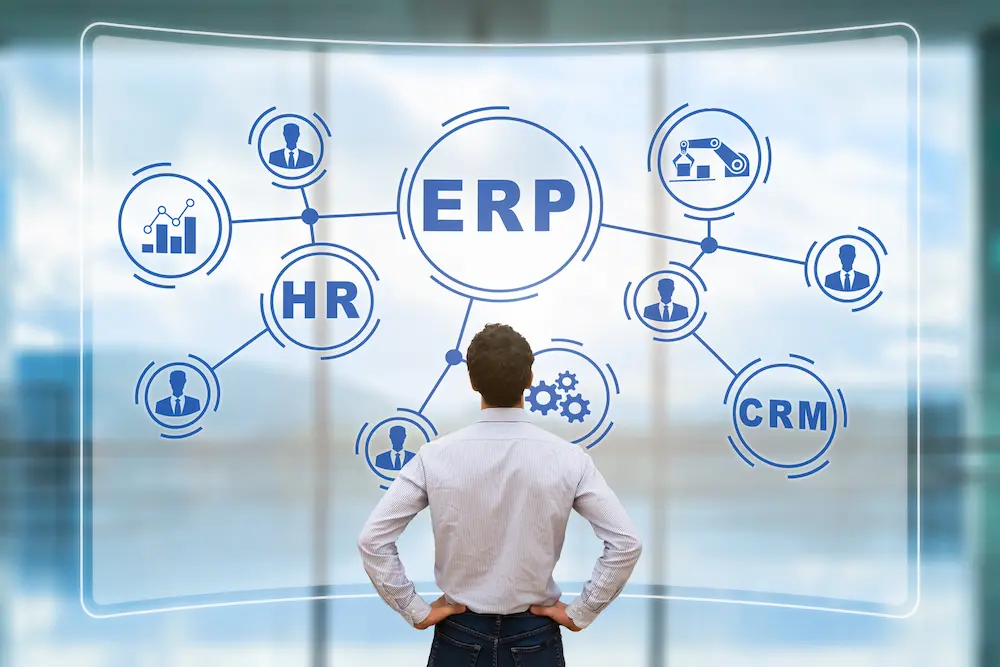Imagine a scenario where your sales team lands a massive order, but your inventory system acts up. Meanwhile, production is scrambling because they haven’t received updated material requirements. That’s where Enterprise Resource Planning (ERP) systems come in.
These software platforms integrate crucial processes, such as finance, supply chain management, and human resources. However, as companies evolve and expand, adapting ERP systems to enable seamless connectivity can become a challenge.
This article provides you with the knowledge and tools you need to achieve seamless network connectivity. Dive in and discover how to transform your ERP system into a powerhouse of efficiency and connectivity!
Assess Your Current Systems And Processes
Evaluating your existing operations is essential before implementing an ERP system. Actively analyze workflows, procedures, and systems to pinpoint areas that need improvement. For instance, if your inventory tracking is manual and error-prone, an ERP can streamline this process. Identifying such inefficiencies helps determine how an ERP can enhance productivity and connectivity across departments.
The assessment phase allows you to understand your organization’s requirements thoroughly. So, don’t just adopt an ERP unquestioningly; customize it to address specific challenges. Involve your personnel from various teams to gain multi-perspective insights.
You can also consult for SAP integration (Systems Applications and Products) from industry experts to help with the assessment and the implementation process. A clear understanding of the current state and goals will allow you to configure the ERP system accordingly, ensuring a smooth transition and maximum benefits.
Define Integration Requirements
When implementing an ERP system, clearly understanding integration needs is crucial. After thoroughly evaluating the current operations, outline specific requirements for integrating the ERP’s existing data sources, applications, and processes. For example, if you use separate software for accounting and inventory management, the ERP should seamlessly connect these functions.
Team members from the relevant departments can help gather comprehensive insights during this planning phase. Their first-hand experience might uncover integration prerequisites you may need to look into. Outsourcing IT support services in your area can also be helpful at this stage.
However, you must find one with a proven track record in your industry to ensure they know the regulatory requirements. For instance, if you operate in Bellevue, look for top IT outsourcing firms in Bellevue that have experience with businesses in your sector. Their expertise can guide you in defining integration requirements that align with industry best practices and compliance standards.
Defining integration specifications upfront prevents costly rework later. With a solid integration strategy, you can maximize the ERP’s potential, enabling efficient data exchange across your organization for smoother workflows and better-informed decision-making.
Choose The Right ERP Solution
Selecting ERP solutions that are easy to integrate across your business operations is crucial. Research available options to identify the ideal fit that meets your specific network connectivity needs. For instance, if you rely on legacy software for inventory tracking, ensure the ERP you choose can integrate with that application effortlessly.
Key considerations during this process include:
- Application Programming Interface (API) connectivity.
- Real-time data synchronization capabilities.
- Compatibility with your existing systems and processes.
Don’t settle for complex integration workarounds; invest in an ERP purposefully designed for smooth interoperability right out of the box.
Thoroughly evaluate vendors, exploring their offerings’ features and compatibility. Read reviews, request demos, and ask about success stories from businesses similar to yours. After all, an ERP system is a long-term investment, so make an informed choice. With the right solution, streamlining operations, improving efficiency, and driving growth becomes a breeze.
Automate Workflows And Processes

Utilizing the automation capabilities of your new ERP system will help make workflow more productive and achieve operational efficiency. Identify repetitive, manual tasks currently bogging down your team and configure automated workflows within the ERP to streamline the processes.
If your sales representative spends hours each week manually entering new orders, automate this data entry to cut administrative overhead. Additionally, leverage ERP’s automation strengths to reduce human error risks in areas like financial reporting, invoice processing, and management approvals.
With automated alerts and approvals pre-built, you can increase accuracy while accelerating cycle times. However, be sure to thoroughly document and monitor the performance of any automated processes to identify and resolve issues quickly.
Develop An Integration Strategy
Crafting a comprehensive integration plan is vital for blending your new enterprise resource planning system with the existing software and processes. This blueprint should detail how the system will interface with other applications across your organization. For example, if you currently use separate Customer Relationship Management (CRM) and accounting platforms, outline the specific steps to integrate customer and financial data into the centralized ERP.
Beyond mapping data flow, your strategy must also account for automating key workflows through the unified system. If sales orders currently require manual entry into multiple systems, design automated processes to streamline this workflow via the ERP. Security protocols are another critical consideration—ensure your plan robustly protects sensitive information while enabling appropriate access.
To keep the implementation on track, establish a clear roadmap with milestones for hitting key integration benchmarks. Involve cross-functional teams throughout this planning phase to gain diverse insights and ensure your integration design accommodates all operational requirements.
Conclusion
Adapting an ERP system for seamless connectivity is an involved process, but one that yields immense benefits for your organization. By following the steps outlined in this article, you can transform your ERP system into a powerhouse of efficiency and reliable connectivity. Remember, seamless integration isn’t just a technical upgrade: it’s a strategic move that enhances collaboration, improves data accuracy, and drives informed decision-making. So, embrace the challenge of adapting your ERP system with confidence, knowing that the benefits of seamless connectivity are well worth the effort.









